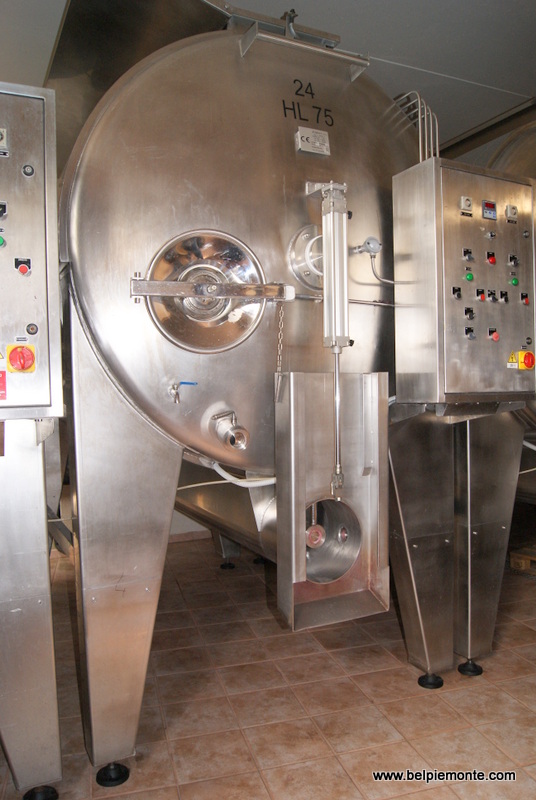Barriques contra botti (big barrels)
- Scritto da Monika Nowak
- font size diminuisci il font aumenta il font
- Stampa
- Vota questo articolo
- Pubblicato in Bel Piemonte
- Letto 23765 volte
Barolo, produced in 11 communes, by 770 producers, in the quantity of 10 920 000 a year, it has already become a true ambassador of Piedmont region, and a bottle of this red liquid is an object of desire for wine lovers.
No wonder that both tourists and professionals visit wineries and they listen eagerly to winemakers telling about their history, job, everyday challenges, but also techniques used for wine production. And the last one, by the way, can be completely different. An example? Two neighbors living in La Morra: Elio Altare and Lorenzo Accomasso. Lorenzo Accomasso is a symbol of tradition, while Elio Altare was one of pioneers in using new methods in Barolo making process. And even though a division between traditionalists and modernists doesn’t exist anymore, no so long time ago the wine world in the Langhe was heavily divided. And the reason was …the size of a wood barrel.
Winter 1976. Young Elio Altare has just come back from Burgundy where he was learning from French winemakers not only how to make wine, but also how to make money from it. In a family farm his father Giuseppe can hardly make ends meet by apple and hazelnuts trees cultivation, that at that time bring more money that 5 hectares of Nebbiolo, Barbera and Dolcetto varieties. These are years o f crisis and poverty in a rural Langhe area. Elio understands he needs to implement serious changes to have a chance for a better life. He grabs a saw. He cuts down the family orchard, and then he gets down to the cellar and he cuts off all big barrels (botti). Elio burns down wood and on their place arranges new French barriques (small barrels). But this brave act will cost him dearly. The father Giuseppe can’t understand his behavior, he takes it as an insult and a wastage and he doesn’t agree to implement modifications in his farm. He dies in 1985 disinheritating Elio . But a young revolutionist doesn’t give up. Elio decides to buy an estate from his siblings and starts a wine production, but this time on his way.
We are in 2013. Silvia, a young winemaker, shows us the winery. She continues family business under the watchful eye of papa’ Elio, while her younger sister lives in Germany working as a wine distributor. They owns 10 hectares of land (the half is leased) and the family cultivates such varies like Nebbiolo, Dolcetto, Barbera, Cabernet Sauvignon and other black grapes. In average 60 000 different wines are delivered at market each year: Barolo DOCG, Langhe Rosso DOC, Dolcetto d’Alba DOC, or Barbera d’Alba DOC, but also l’Insieme. It’s a mix of six varieties like cabernet sauvignon, Barbera, Nebbiolo, Dolcetto, Sarah and Petiti Verdot.
But for tasting the time will come. We start our visit from the cellar. While we are going down the stars I already can see an impressive wine collection. But only when I look closely at the labels I notice they wasn’t produced in La Morra. Young Elio Alter wasn’t rich, but still he has never refused himself opportunity to travel. He has been brought bottles of wines from his voyages to learn from other winemakers and to understand great wines.
Where at the times of Giuseppe Altare hens was running between botti, today we can find tidily arranged French barriques. They are used for maturation of all red wines except Dolcetto. In Elio Alatre’s cellar we will find more signs of new trends in Barolo making process. He was one of first to use rotofermentators (rotary tanks), as soon as they appeared on the market at the beginning of 90s. Some people compare it with concrete mixer as it works horizontally and rotating rotors installed inside the tank allow contact between skins and must, replacing in this way a traditional method of capello sommerso. The fermentation process is very quick (3-5 days) in a high temperature (25°C).

In vineyard of Elio Altare there is also a place for a tradition. Silvia showed us wooden opened tank. The family decided to make Barolo wine in a limited edition. It was a tough task as each grape was manually separated from the cluster, and temperature control in open tank was a big challenge too. But at the end life of winemaker is full of challenges, the necessity of constant change and improvements, independently from the method implemented in wine production.
In my next post I will present you Lorenzo Accomasso - the legend man, cavaliere who dedicated his all life for his biggest passion – passion for wine.
Questo articolo e’ diponibile anche in italiano: QUI
Ten artykuł jest dostępny również po polsku: QUI

Monika Nowak
I’m Polish blogger and freelance journalist tasting “la dolce vita” by traveling around Piedmont. As Italia is my passion since the childhood I’m happy having the chance to discover the kingdom of great cuisine and probably the best wines in the world, but also charming little towns and interesting history. My blog Bel Piemonte (available also in Polish and in Italian) was born to show the beauty of this region and to encourage others to discover this part of the Apennine Peninsula.
Website: www.belpiemonte.com/en/













 Diana Zahuranec
Diana Zahuranec Suzanne Hoffman
Suzanne Hoffman Erika Mantovan
Erika Mantovan Diego Schiappapietra
Diego Schiappapietra Lara Statham
Lara Statham Wine Pass
Wine Pass Ilenia Colucci
Ilenia Colucci Antonio Cimmino
Antonio Cimmino Elisa Vimercati
Elisa Vimercati Gabriele Pieroni
Gabriele Pieroni Maria Vittoria Pericu
Maria Vittoria Pericu Andrea Viberti
Andrea Viberti Stefano Molino
Stefano Molino Jennifer Martin
Jennifer Martin Barbara Giglioli
Barbara Giglioli Larry & Heather Theobald
Larry & Heather Theobald Gabriele Rosso
Gabriele Rosso